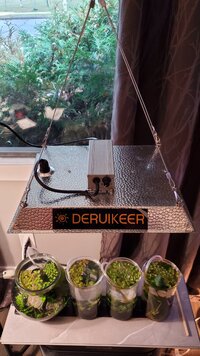Ive been following this thread, I dont always understand all the terms used but I know that I will want to get a better spectrum light for my tank some time in the future, either a premade light or learning how to DIY it. My personal goal would be to have something close to sunlight without big gaps in the spectrum, to have accurate color rendition. Plants will grow pretty much no matter what, so its just for my own personal satisfaction. Ive been looking around a little bit on the internet, keeping in mind that I have only the vaguest grasp on what the terms mean. The knowledge level in this thread is way beyond my current, so forgive me if this is a stupid question or already known about.
I came
across these two products, and was wondering if one could make a custom aquarium fixture/pendant with these strips and the aluminium profile and accessories a little further down on the page.
I assume they would definitely not be able to go under a hood (needs waterproof rating for that), but could these otherwise be used as an aquarium light?
I added a set to the cart to see what kind of price range one would be looking at.
One of these Lumibars with the Nichia Optisolis 5000K 56cm plus the accessories (dont know if I selected the correct driver) works out to around €70.
Grateful if someone could explain it to me in relatively simple terms or just let me know if its not relevant














